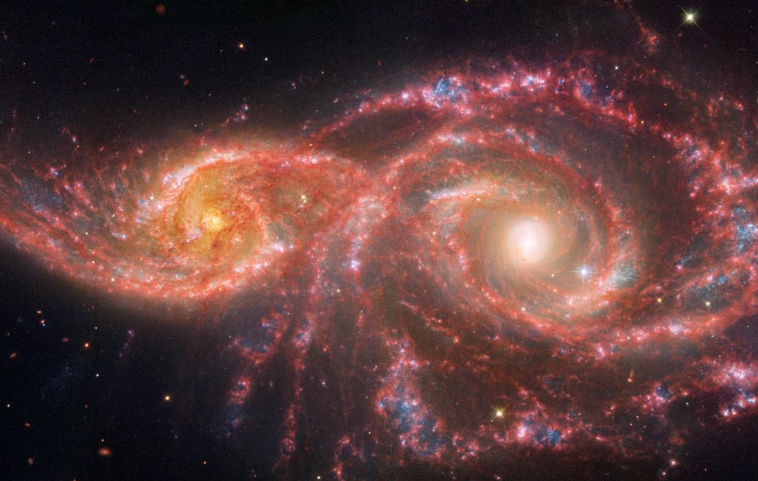The James Webb Space Telescope (JWST) represents a monumental leap forward in our quest to understand the cosmos. Launched by NASA in December 2021, this highly advanced telescope has already begun to transform our comprehension of the universe. With its unparalleled capabilities in infrared observation and sophisticated instruments, the JWST is poised to unravel cosmic mysteries ranging from the earliest galaxies to the atmospheres of distant exoplanets.
In this article, we will explore the innovative technologies behind the JWST, its contributions to astronomy, and what it reveals about the universe. As we delve deeper, we will uncover why this groundbreaking instrument has become a beacon for space enthusiasts and scientists alike.
The Need for Advanced Space Telescopes
Why do we need a telescope like the James Webb? Ground-based telescopes, although powerful, face significant limitations due to Earth’s atmosphere. Distortions and light pollution hinder observations. The Hubble Space Telescope offered a solution by orbiting beyond the atmosphere, but its limitations in capturing infrared light left gaps in our understanding. This is where JWST excels. With advanced instruments designed specifically for infrared astronomy, the JWST allows us to peer further into the universe than ever before.
Technology Behind the James Webb Space Telescope
Cutting-Edge Infrared Observations
At the heart of the JWST’s power lies its ability to detect infrared light. Unlike visible light telescopes, it can penetrate cosmic dust and observe cooler celestial objects, including forming stars and distant planets.
The Gold-Coated Mirrors
JWST’s mirror system is an engineering marvel. Composed of 18 gold-coated beryllium segments, its massive primary mirror measures 6.5 meters in diameter, dwarfing Hubble’s 2.4-meter mirror. This increased size enhances its light-gathering ability, enabling sharper and more detailed imagery.
Sunshield and Temperature Control
To ensure optimal performance, JWST operates at extremely low temperatures. Its sunshield, made of five ultra-thin layers, protects the telescope from solar radiation. This design keeps the instruments cold, crucial for detecting faint infrared signals.
Instruments on Board
- Near Infrared Camera (NIRCam): Captures detailed images of faint and distant objects.
- Near Infrared Spectrograph (NIRSpec): Analyzes light spectra to determine composition.
- Mid-Infrared Instrument (MIRI): Observes cooler objects such as planets.
- Fine Guidance Sensor/Near InfraRed Imager and Slitless Spectrograph (FGS/NIRISS): Ensures precision pointing and supports spectral analysis.
Contributions to Astronomy and Cosmology
Peering into the Cosmic Past
One of JWST’s primary objectives is to explore the universe’s origins. By observing galaxies formed shortly after the Big Bang, it offers insights into the cosmic dawn, helping us understand how galaxies evolved over billions of years.
Revealing Exoplanet Atmospheres
The ability to analyze exoplanet atmospheres marks a revolutionary step in the search for extraterrestrial life. By studying light passing through a planet’s atmosphere, JWST identifies chemical signatures that might indicate life-supporting conditions.
Star and Planet Formation
JWST’s infrared vision unveils regions of star and planet formation obscured by interstellar dust. These observations are crucial for understanding how stellar systems evolve.
Insights into Dark Matter and Energy
Understanding the distribution of dark matter and energy is critical for cosmology. JWST’s observations contribute to deciphering these enigmatic components that make up most of the universe.
Comparing the Webb Telescope to Hubble
The James Webb Space Telescope is often compared to its predecessor, Hubble. While Hubble revolutionized astronomy with visible light observations, JWST complements this by focusing on infrared. This enables Webb to look deeper into time and observe phenomena inaccessible to Hubble.
Moreover, Webb’s technological advancements mean it can observe faint objects with unparalleled clarity. For example, while Hubble struggles with light absorption by cosmic dust, Webb’s infrared capability allows it to see beyond these obstructions.
Major Discoveries So Far
Since its launch, the James Webb Space Telescope has delivered extraordinary findings. Among them:
- Early Galaxies: Observing galaxies from less than 500 million years after the Big Bang.
- Detailed Exoplanet Data: Confirming water vapor in exoplanet atmospheres.
- Stellar Nurseries: Revealing stunning imagery of star-forming regions like the Carina Nebula.
- Insights into Black Holes: Probing the environments of supermassive black holes.
These discoveries have not only expanded scientific knowledge but have also sparked public fascination with the universe.
Challenges and Future Prospects
Despite its successes, operating a complex telescope like JWST comes with challenges. Precision calibration, unexpected technical issues, and the sheer magnitude of data processing require constant attention. However, the potential for groundbreaking discoveries far outweighs these challenges.
Looking ahead, JWST is expected to collaborate with future missions to form a comprehensive view of the cosmos. Upcoming projects, such as the Nancy Grace Roman Space Telescope, will further enhance our understanding when paired with Webb’s data.
Conclusion: Why the James Webb Space Telescope Matters
The James Webb Space Telescope is more than an engineering feat; it is humanity’s window into the universe. From unraveling the mysteries of galaxy formation to investigating the potential for life beyond Earth, its contributions are unparalleled. By pushing the boundaries of what we can observe and understand, the JWST inspires us to look up, explore, and question our place in the cosmos. The discoveries it will yield promise to reshape our understanding of the universe for decades to come.
As we continue to harness its capabilities, one thing is certain: the James Webb Space Telescope is illuminating not only the vastness of space but also the limitless potential of human curiosity and innovation
Read more about technology here
Read more about science here
Image credits https://webbtelescope.org

